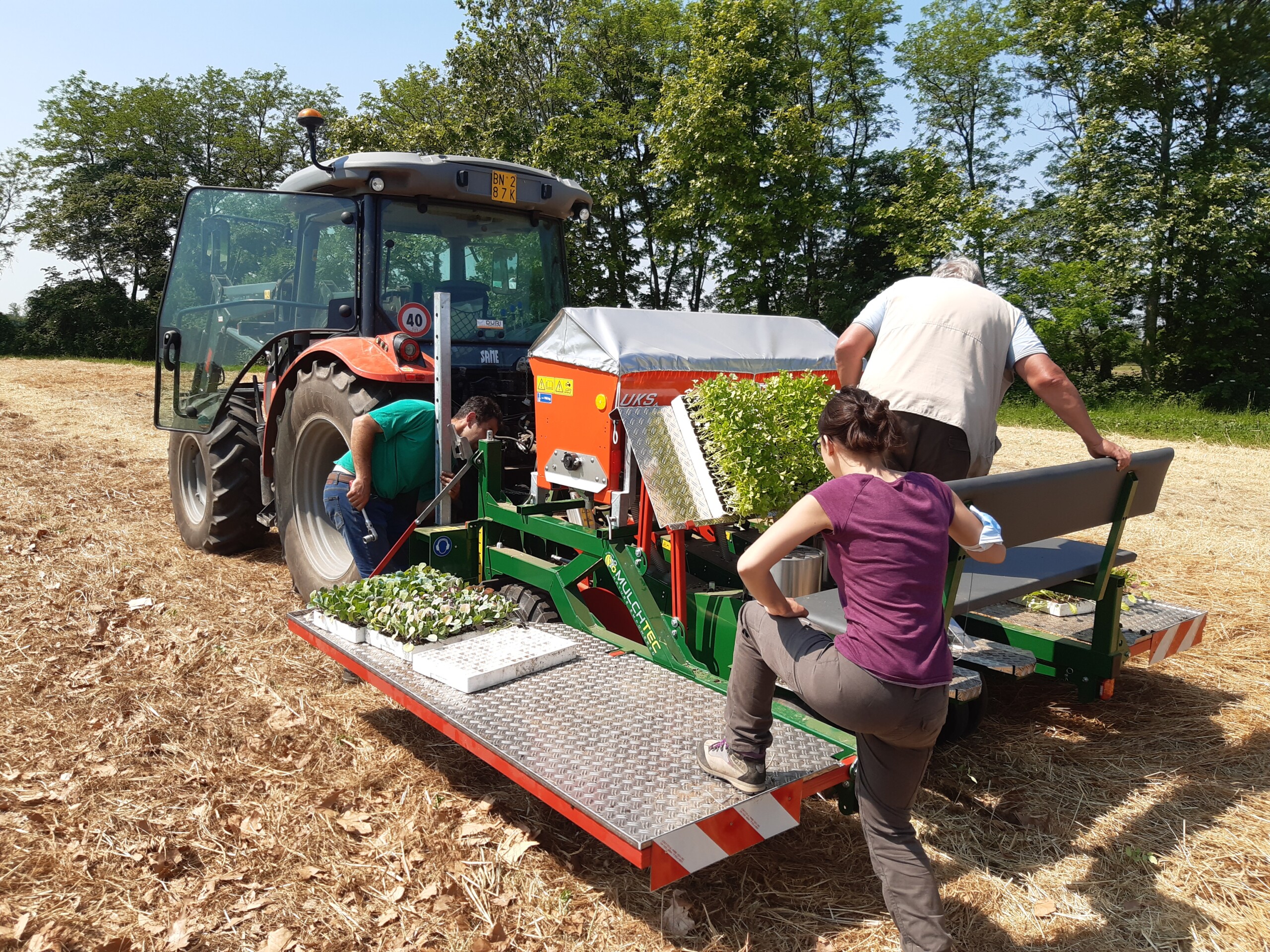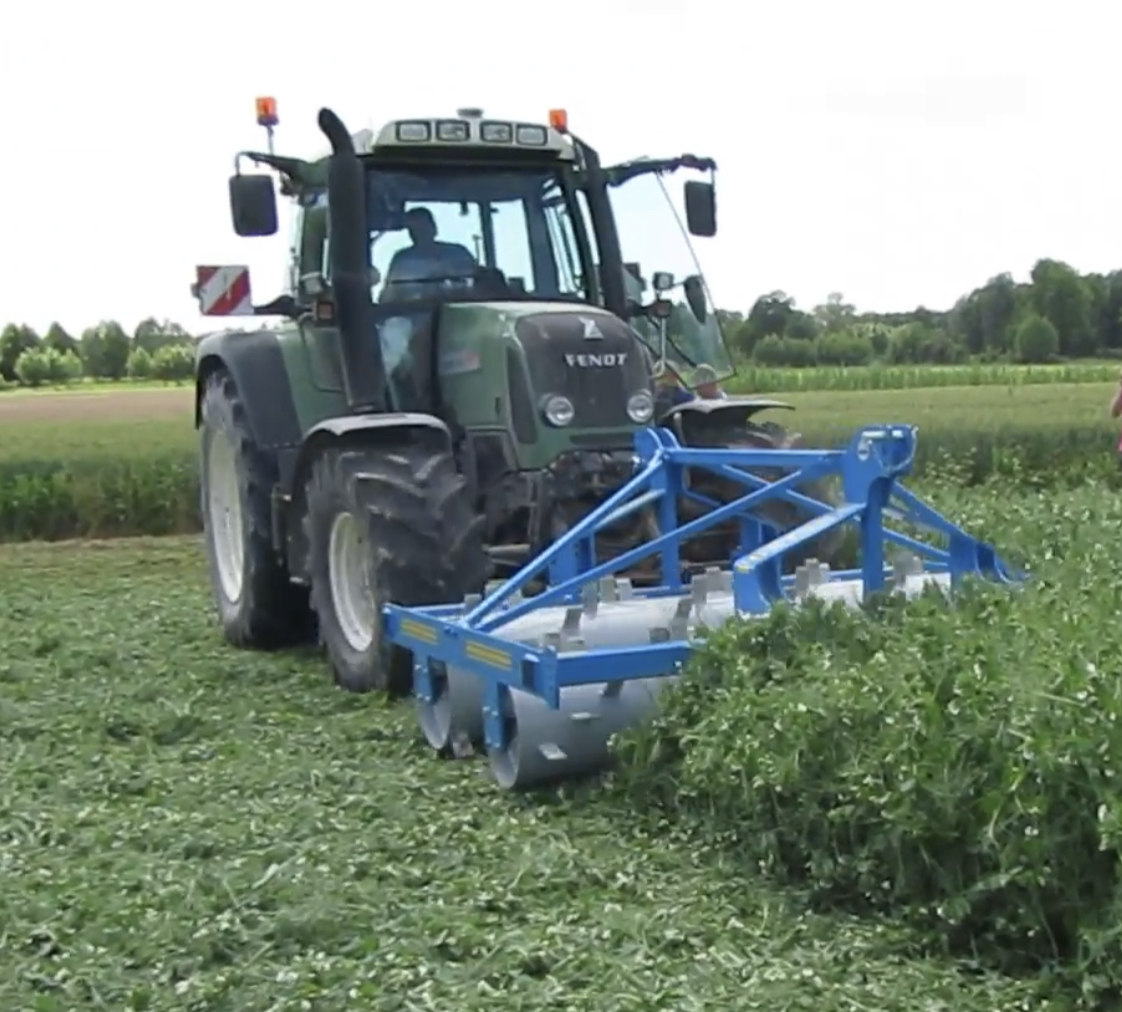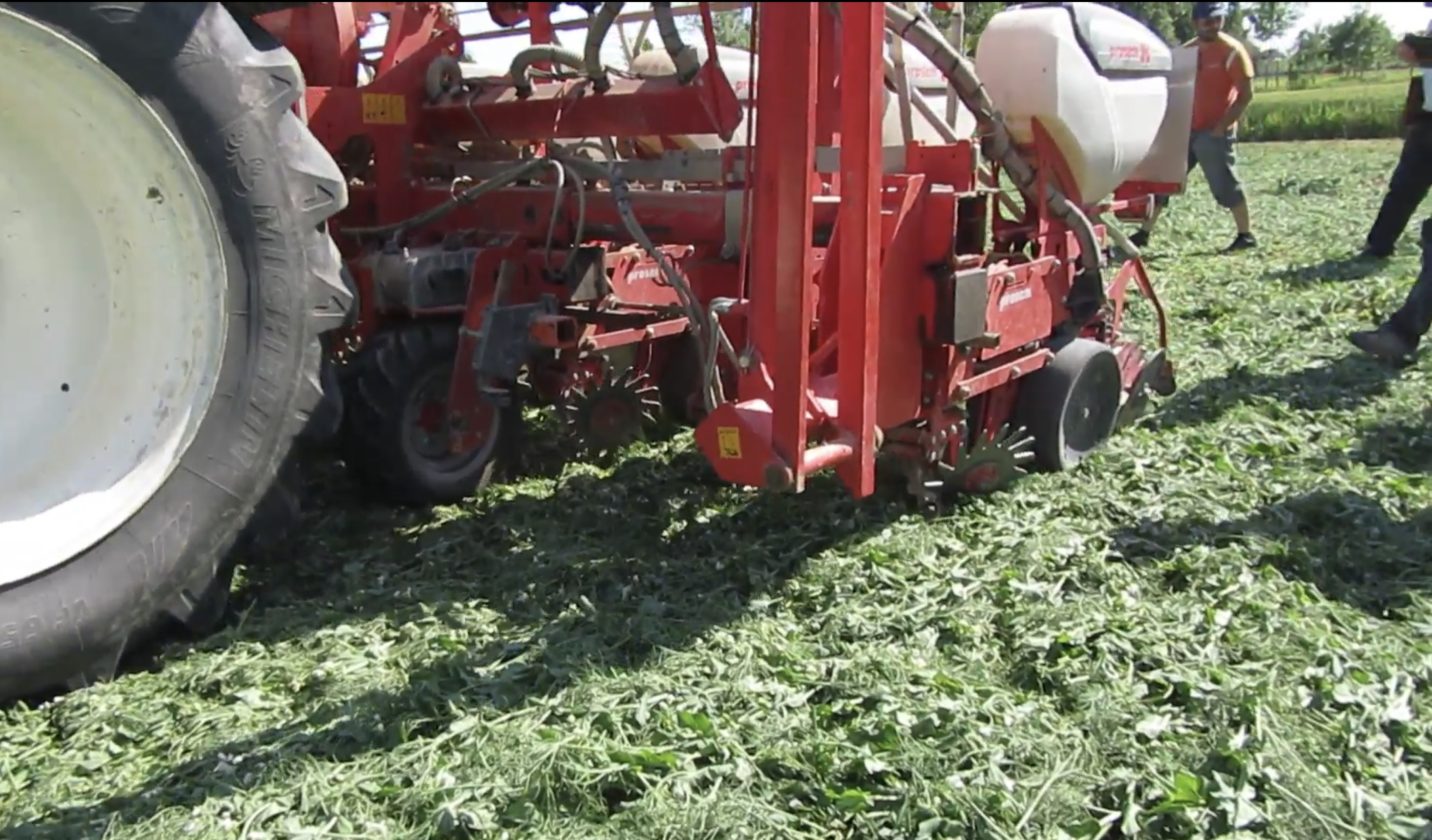What was the challenge/ problem that was addressed?
Sod seeding arable crops and transplanting vegetables in organic farming and weed management.
Maize is one of the most difficult field crops in terms of weed management. The low number of plants per m2 and the relatively long time the crop requires to cover the soil surface encourage the growth of summer weeds and increase water evaporation.
Another challenging crop in organic systems due to its low ability to compete with weeds during growth is a soybean. 2 to 4 hoeing passages with camera-controlled steering systems are an option, but they significantly increase production costs. Moreover, in the traditional Italian growing areas, irrigation is becoming a necessity to ensure good yields. However, not all areas can be irrigated at a reasonable cost.
How did you solve the problem?
The mentioned problems can be avoided by sowing maize in a no-till system into a mulched cover crop. This method requires mechanical termination of the cover crop that precedes the maize crop with a roller-crimper, and, for sowing maize, a no-till planter is needed. The mulch cover will control weeds during the initial growth phase of the maize crop and reduce water loss by evaporation. If leguminous cover crops are used, important amounts of nitrogen can be collected.
In a Northern Italian context, a field pea cover crop was tested as mulch for the maize crop. The roller-crimper effectively terminated the cover crop (15 t per ha of wet biomass). However, the mulch did not last long enough, probably due to a narrow C/N-ratio and biologically active soil. The maize plants did not have enough time to develop and shade the entire soil surface. Weeds started to sprout through the decomposing mulch. For the test conditions, this cover crop has proven unsuitable as a long-lasting mulch to control weeds. No fertilization and no irrigation were applied. The maize yields amounted to about 5 t per ha.
When it comes to soybean, several methods of sowing into mulch were tested: A) No-till sowing into a standing cover crop, then rolling the cover crop with a roller-crimper; B) No-till sowing into a standing cover crop, then creating mulch by passing over it with a flail shredder; C) No-till sowing into a standing cover crop, and no follow-up procedures; D) Mulch obtained with a flail shredder, then no-till sowing with a tine air seeder; and E) Roller crimper followed by no-till sowing with a tine air seeder. All of these methods, except method B, have shown good results in terms of weed control, and preservation of soil water (even during the dry summer in 2016). Yields were comparable with those of the tilled fields, except for method C.
Thus, as a solution, soybeans may be sewn into the mulched cover crops in a no-till system. The mulch cover suppresses the weeds during the initial growth of the crop and reduces the amount of water lost by evaporation.
What are the success factors in solving the problem?
Technically, Cover crop species, Timing, and available nutrient management. In terms of advisory, AIAB FVG (the regional brand of the Italian Association for Organic Agriculture) operates to facilitate capacity development among organic farmers in North-Eastern Italy through a team of qualified organic farming advisors. Those advisors are currently disseminating the roller-crimper technique in arable and vegetable crops.
Unexpected failures, if any.
Timing is critical to terminate the cover crop and the roller-crimper availability might represent a bottleneck.
Lessons learned.
- The cover crop needs to be sown as accurately as the main crop. Poor cover crop stands do not result in good mulches.
- The effectiveness of the mulch depends on the amount of mulch biomass. However, more biomass also means more difficulty for the planter.
- On soils with low organic matter content, additional nitrogen fertilization should be considered.
- Cover crop management and time are critical for getting acquainted with the technique and to ensure a wider familiarity among farmers.
What role does the advisor or advisory service play within your practical case?
AIAB FVG Advisory service was essential in making the technique appreciated by the farmers and to fostering a greater adoption.
Can your approach be transferred and/or adapted for other innovation challenges and regions?
Yes
Please estimate transferability in a scale from 1 to 5
3
For sharing the experience on the good practice, please contact Stefano Bortolussi (Stefano[at]aiab.FVG.it)




